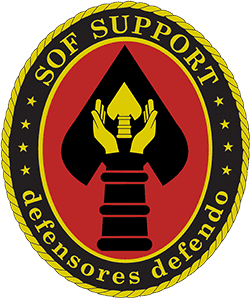By Rosemary Giles
While units like the Navy SEALs and Army Green Berets are widely recognized for their guerrilla operations, advisory roles, and direct combat during the Vietnam War, one critical team often remains in the shadows: MACV-SOG. The Military Assistance Command, Vietnam – Studies and Observations Group was a top-secret, elite organization that fused the capabilities of special forces soldiers with CIA operatives, creating a unit trained for some of the conflict’s most dangerous and consequential missions.
Focused on unconventional warfare, MACV-SOG conducted deep reconnaissance, hostage rescues, psychological operations, and enemy captures. Their covert, high-risk operations had a lasting influence on the war, cementing their reputation for exceptional skill, bravery, and ingenuity.
MACV-SOG’s top-secret beginnings
At first, MACV-SOG’s operations were overseen by the Special Assistant for Counterinsurgency and Special Activities within the US Department of Defense, allowing the unit to conduct missions beyond South Vietnam’s borders. As the group’s role expanded, oversight eventually shifted to the military.
Many of MACV-SOG’s covert missions took place in North Vietnam, where secrecy was essential to maintaining the official narrative that U.S. forces were only operating in South Vietnam. The group also carried out operations in Laos and Cambodia, focusing on the Ho Chi Minh Trail, a vital supply route for the North Vietnamese Army (NVA).
Because of the extreme risks involved, MACV-SOG was made up entirely of volunteers. The danger was so severe that the unit faced a staggering 100 percent casualty rate, with members knowing that their service would likely earn them either a Purple Heart or a flag-draped casket.
Unidentifiable Americans
For armament, MACV-SOG operatives commonly carried either a CAR-15 or an AK-47, along with M79 grenade launchers. TTo prevent identification, all serial numbers on these weapons were carefully removed. Each weapon was carefully secured to reduce noise during movement; rifles were carried with canvas straps, while M79s were secured using tape-wrapped D-rings.
In addition to firearms, operatives carried other weapons, including fragmentation grenades and V40 mini grenades, reflecting the unconventional nature of their operations. For example, Staff Sgt. Robert Graham, a MACV-SOG member, famously relied on a 55-pound bow with razor-sharp arrows when normal ammunition ran out.
Ho Chi Minh Trail
These operations were fraught with danger and required close collaboration with local forces, who made up the majority of each team. Typically, two to four American personnel worked alongside a contingent of four to nine South Vietnamese guerrillas.
In an interview with History of MACV-SOG, Jim Bolen elaborated on the challenges of operating along the Ho Chi Minh Trail, noting that the trails were often close to large enemy encampments with thousands of soldiers, making the missions particularly high-stakes. Famous missions like the Thanksgiving Day 1968 operation, where a six-man team faced an overwhelming enemy force of 30,000 troops, underscored the extreme risks involved. Similarly, Frank D. Miller’s lone encounter with 100 NVA troops exemplified the perilous nature of these covert operations.
MACV-SOG operations behind enemy lines
Through efforts like this, MACV-SOG providing 75 percent of the intelligence gathered by the U.S. military on activity along the trail.
Beyond reconnaissance, the unit had a critical secondary mission: capturing enemy personnel deep behind hostile lines. These operations ranked among the most dangerous tasks, sometimes serving as the primary objective, other times supporting broader missions—but consistently received strong backing from military command.
Prisoner snatching behind enemy lines
Capturing prisoners required creative thinking. One operator, Lynne Black, carefully figured out how much C-4 explosive was needed to knock out a target without killing them—a risky process that took trial and error. Operatives would place explosives along enemy trails and wait for troops to pass by. When the time was right, they’d remotely detonate the explosives, knocking enemies unconscious so they could be quickly captured.
Throughout the Vietnam War, MACV-SOG played a key role in major operations like Steel Tiger, the Tet Offensive, Tiger Hound, Commando Hunt, and the Easter Offensive. Despite their impact and skill, their missions stayed mostly secret until the 1980s.
The group’s members weren’t formally recognized until 2001 when they received the Presidential Unit Citation.
